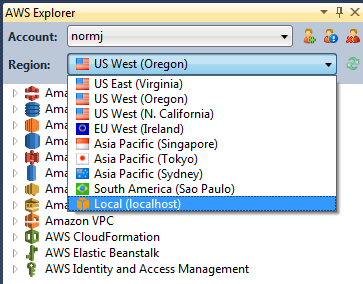
We are done with the DynamoDB configuration. This means that your table creation was successfully. When the table is created you should be redirected to the table management route. It’s time to configure DynamoDB.įill the table name to employees (if you are following this tutorial) and Primary key id with type string.

This will help us to identify if it is local or serverless instance of the server NODE_ENV: production // the environment, let’s call it ‘production’. TABLE: employees // the name of our future database table (will create it soon) Go to the “Environment variables” section and include two variables which we will use later when writing our Node.JS logic. We will do one more thing before saving it.

Scroll down to Execution role and choose the role you want to use, in my case ‘employee-lambda-role’. You will be redirected to the specific Lambda page. Now, we can get back to our lambda and assign this role to it. The role should be created and available in the list of roles available in IAM. For our example here, we will use the already available AmazonDynamoDBFullAccess policy.Ĭlick Next and again Next and you should view the Review part.įill the desired role name, something like ‘employee-lambda-role’ and click Create Role The policies are basically rules in JSON format that tells the role what permissions should be given to the service attached to it. Here, we can create our own custom policy or use the already available ones. We will need it, as I already mentioned, to grant access to DynamoDB – the database we will use.Ĭhoose the service that will use this role – in our case Lambda and click Next: Permissions Now, when our function is created, let’s switch for a moment to IAM(Identity and Access Management) and create a role for it. We will also be redirected to the newly created lambda. Choose Test to input a test event when you want to test your function.” appear.
#RUN LOCAL DYNAMODB CODE#
You can now change its code and configuration. It will take a few seconds before a success message “ Congratulations! Your Lambda function “employees” has been successfully created. Until then, our function will use the basic role which has really limited access and will be able to only upload logs to CloudWatch.Ĭlick Create Function. Leave the Permissions field as it is, we will get back later to it to add permission our Lambda to access DynamoDB.
#RUN LOCAL DYNAMODB FOR FREE#
Don’t worry, there is plenty of it for free 🙂Ĭhoose the region from the top right and click Create a functionįill the function name, I will use ‘employee’ for this example, Runtime – Node.js 10.x. and one more thing – you are paying only for the compute time you consume. Just “deploy” your code and you are ready to go. The cool thing about it is that we don’t have to care about scaling and other server administration/management things. We will use the popular Lambda service as a back-end. Implement local development capabilities using Docker Compose (for easier development and testing)Ĭonfigure AWS – Create Lambda function with API Gateway and DynamoDB database table creationīefore continue, you will have to register to AWS(if you haven’t already) –.Automate the deploy process using AWS CLI.Setup new Node.JS project using Serverless Express and implement basic routes.Configure AWS – Create Lambda function with API Gateway and DynamoDB database table creation.In order to understand the code, we will explore it file by file, step by step. You can see the complete code in First Class JS – GitHub(link). My main goal is to introduce you to the basics of using AWS, not the best practices to write Node.JS code.

#RUN LOCAL DYNAMODB HOW TO#
The purpose of this tutorial is to show you how to create your first serverless API using Amazon Web Services(AWS) Lambda, DynamoDB, API Gateway for API exposure and of course Node.JS.


 0 kommentar(er)
0 kommentar(er)
